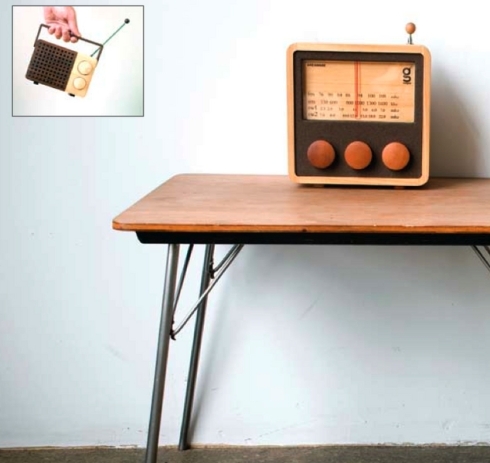
In March I was invited to spend a day with friends out in their woods. We had a special guest with us visiting all the way from Indonesia, Singgih S Kartono, a product designer, who makes wooden radios and has won many acclaimed awards.
The Magno wooden radios are hand-made and embody design with awarness and grace – as they tune-in to how design can be a vehicle for more than just a product. Magno, the brand, is a way of thinking and doing. It is totally senseness as it carries both a vision, and promotes tactile and sensual qualities. It is not shy of its spiritual aspirations either…
“The combinations of using natural materials in modern products are a kind of soul embodying ritual. It makes products alive. My aim is to sensitize us with the nature, just like the way it was in the past.”
Singgih has created a business and a workshop in his village Kandangan on central Java using local plantation wood, and for what he takes he gives back. As a wood consumer he feels morally responsible towards replacing the woods that he has used. Together with a local high school he is helping to regenerate the dwindling forest around the village.
“I give a free young tree of the tree we used to the people around us to plant on their own land for every each product we sell.”
Amongst his many concerns for sustainability, Singgih is helping to consolidate his local community by providing training and work opportunities for skilled craftsmen. His philosophy is minimising resource-use whilst capitalising on human resources in terms of manufacturing processes. This way he both helps to keep alive a long tradition of craftsmanship and also upskill younger generations. And with these local concerns at the heart of his work his designs are tuned-in to contemporary tastes far beyond Java, (resonating all the way to New York where I the other day saw a Magno wooden radio).
“A well-aged log of wood can give a worker the chance to work for more than a year. In my thought, a designer must become contextual, and that was why I choose to live and work in a village to give my contribution for the local environment.”
Singgih’s integrated approach is a relational one; the objects crafted in his workshops stimulate the senses. The tactility of them, created by the way the particular treatment of the wood somehow conjures connections between past and present. Our long-lasting relationship with wood cannot but affect us, and so arises a relationship between owner and object that he actively seeks to put forward:
I disagree with the maintenance-free approach in products. We must maintain and take care of products we buy. This is what I call as a moral obligation between product’s owner and its products.
Spending a day in the woods has a profound effect on well-being. Paul Bloom, a professor of psychology at Yale recently wrote an article on ‘natural happiness’ about how natural habitats enhance our happiness in everyday life and “provide significant sources of pleasure for modern humans”. There is no doubt that the use of natural materials in a recognisable form, such as wood; helps create a unique relationship between functionality and pleasure. I might also claim that it helps maintain a relationship to the woods, even when the woods are far. Singgih knows this.

1 comment
Comments feed for this article
May 11, 2009 at 3:05 pm
JJ Hill-Wood
Great post. I’d be interested to know if there are other natural resource-based companies/designers who operate in the same holistic way?